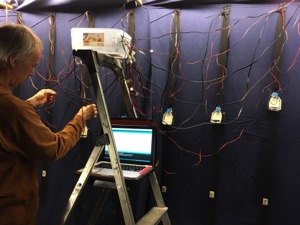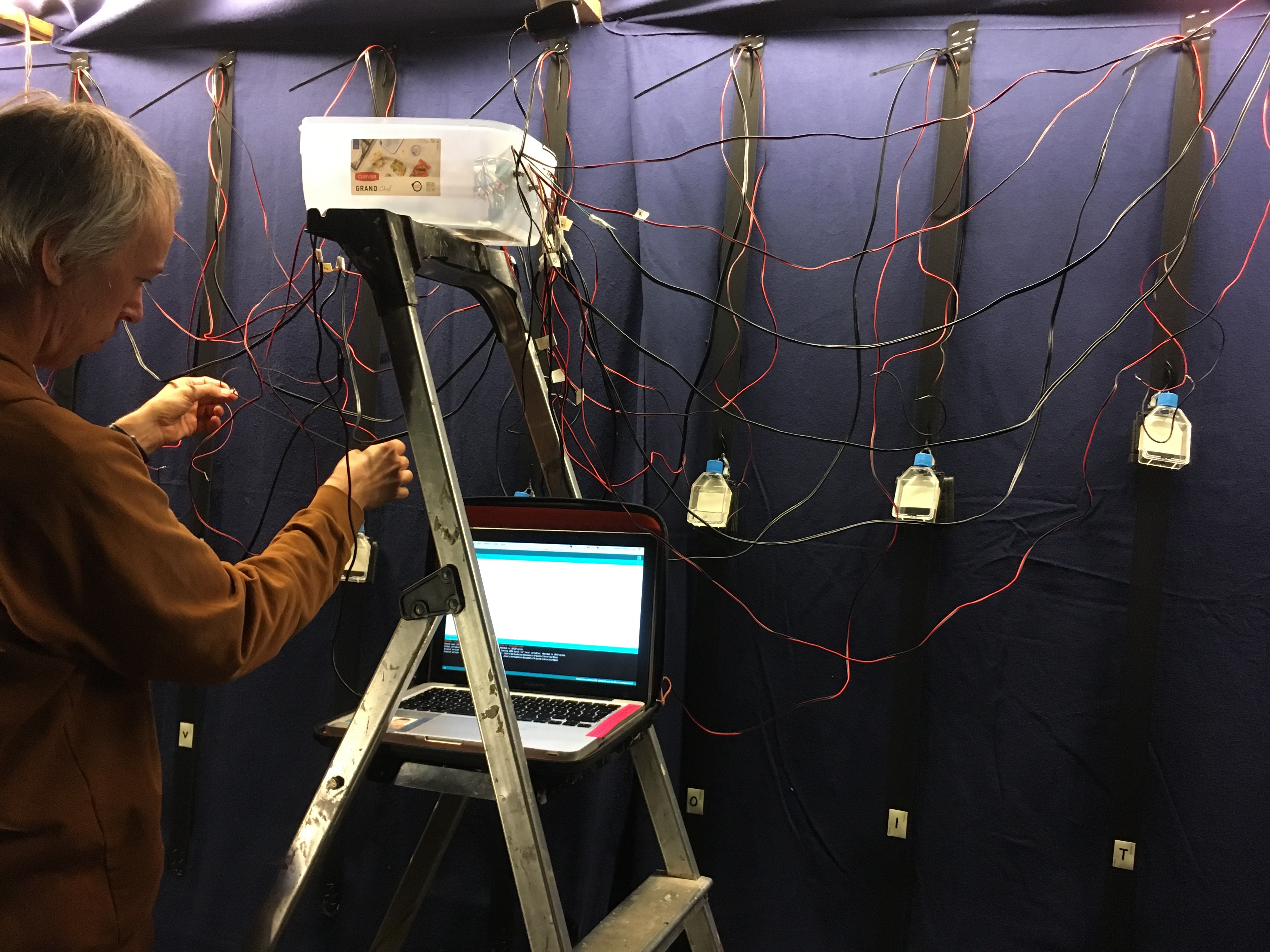Aqua Vivae (2019)
Water that lives. Bioluminescence can be observed when the cells are exposed to turbulence. The reason for light production in dinoflagellates has not been proven scientifically. There are several theories about the purpose of bioluminescence and in this installation Fern Orchestra presents its own vision. The dinoflagellate used in the artwork is not toxic.
The microscopic dinoflagellate Alexandrium ostenfeldii produces light upon mechanical interference of the cell. The phenomenon is called bioluminescence and may be observed in late summer in shallow water along the Finnish south coast and the Åland Islands. Despite the high energetic cost, studies show that there are some 40 different bioluminescent species. The blue wavelength of light used by this microalgae is tuned for travelling furthest through water. A likely explanation for why A. ostenfeldii is bioluminescent is the protection it gives against zooplankton predators. The dinoflagellate also produces a noxious, even deadly substance called saxitoxin that can paralyze the human nervous system. Recent studies show that A. ostenfeldii is favored by high surface water temperatures induced by the climate crisis and increased nutrient levels in the Baltic Sea.
Wavelenghts -bio art exhibition Lieto Vanhalinna Museum, 2019

